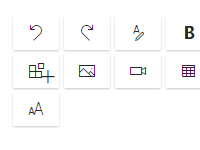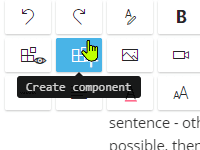
How to create visual work instructions

Did you know that people only remember 10% of what they read? If you add images then it doubles. Video and interaction make it even better. This is why knowledge transfer in work situations is most effective when it is based on images and videos. This article will show you how to easily create visual work instructions.
Looking for something else? See these related links:
Studies show that reading blocks of text are one of the least effective methods of transferring knowledge – especially when it involves co-workers with little education. With this in mind, it is less than ideal that most quality systems are based on written work instructions. Perhaps this is because most of us find it easier to write a document than to create an instructional video? As you will see here, modern video tools mean that it is now much easier to create visual work instructions. So there is really no good reason not to make those work instructions visual. Just think about this old Chinese saying…
“Tell me and I will forget.
Show me and I will remember.
Involve me and I will understand.
Step back and I will act.”
… or the studies that show how we as human beings best retain knowledge:

Below is our suggestion as to how you can go about creating visual work instructions, laid out in five simple steps:
- Separate the process from its work instructions
- Consider which visual elements to use
- Format the text to make it skim-readable
- Cut and insert images into the work instructions
- Insert screen recordings.
New to work instructions?
You may want to start with our guide on How to write work instructions
Your starting point: A document
Let us have a look at a typical work instruction, procedure description, process description, or whatever you would like to call it. How do you turn this into a visual work instruction with a minimum of effort?
Your document may look something like this:

Now, let’s get on with modifying it!
1: Separate process and work instructions
The first thing your reader asks himself is what has to be done and who is responsible? This is the process level. Don’t mix up your process and your work instruction. Only once it is clear to your reader that an activity is his/her job only then is how relevant to him or her. This is when your work instruction becomes relevant. So, the most important first step is to separate the process from its work instructions. The easiest way to do this is to draw a swimlane diagram with “swimming lanes” to show the activities that must be done and the roles that are responsible for doing them.
In the example below, the diagram shows the process and each activity (the blue boxes) represent the scope of the work instruction:

Once you have separated your process (the “what”) from its work instructions (the “how”) then you’re to make visual work instructions.
Here it is important to remember that while the two should be separated it should be very easy to go from process map to work instruction. For instance by clicking an activity box in the diagram.
New to process mapping?
Read our Guide to simple process mapping.
Step 2: Consider which visual elements to use
There are three types of visual elements to consider when you create visual work instructions:
- Text formatting
The reader has to be able to skim the text and find what he is looking for with ease. For instance you can format risks so they always show in a special colour. - Images
Use images to show food, machines or anything where you can make an image. If your instruction is about an ERP system, then make a screen dump (as you’ll see below) - Videos
Even better – next time you complete a task within a system, do a screen recording and record your voice to tell the viewer what you are doing.
Keep in mind that while video can be very good it conveying knowledge it is also more time-consuming than formatting and images, so start with formatting, then add images and only add video, if it really can make the text redundant.
Below we’ll cover how you make visual work instructions with text formatting, images and videos.
Step 3: Format the text to make it skim-readable
Consistent text formatting is important for readability. You may want to use common formats for:
- Purpose – why the activity is important.
- Outcome – what it should produce.
- Instruction – how work is supposed to be done.
- Tips & tricks – good advice that can save time.
- References to other sources – are links blue, or all in one box?
Formatting of text is a chapter in itself but the consistent formatting is an important first step:

A good resource
The Chicago Manual of Style (used as a reference by technical writers)
Step 4: Insert images into the visual work instructions
“An image speaks a thousand words.”
A good place to start when creating visual work instructions is inserting images into your existing documents. Locate any instructions that can be illustrated with, for example, a production image, a product image, or a screenshot showing the system through which the work is done. In this way, creating visual work instructions is easy, as the base already exists in the form of text-based documents.
Also, use images…
- to show before and after states or
- to show right or wrong situations as images make work instructions far clearer and more concrete. E.g. “this is how it should look”.
Collect examples by taking photos daily as you notice something usable. Real-life examples of correct and incorrect ways of working bring the work instructions to life in the eyes of your reader.
👉 Recommendation: Incorporating images into your visual work instructions is a crucial step to enhance clarity and understanding. Images can effectively convey information, show before and after states, or illustrate correct and incorrect procedures. To make your visual work instructions more engaging and informative, consider regularly collecting real-life examples through photos to bring your instructions to life and make them more relatable to your audience.
Tip! Use Windows’ “Snipping Tool” for screenshots
The useful built-in “Snipping Tool” that Windows offers can be used to:
- Select and cut out the part of your screen that is useful. Note! It is important to make the section as precise as possible.
- Insert the section directly into the document or web page (you may not even have to save as a file first).
This is where you may find it (otherwise search “Snipping tool” in Explorer):

Step 5: Insert screen recordings into your visual work instructions
When it comes to creating visual work instructions, images are good but a video is often better. E.g. operations of software or machinery are best shown with a video.
Examples of features on how to create visual work instructions

Integrated work instructions and SOPs
Build step-by-step instructions with text, media and files to explain how and why work is done.

Reusable work instruction components
Turn selected content into components to be reused across processes, saving time and effort.
Here are five ideas for incorporating video into your work instructions:
Idea #1: Record an experienced colleague’s instructions for new employees.
Why not join in when new employees are introduced to the machines’ set-ups? In such a situation, you can record the instructions, post them as private videos on YouTube, and share the link in your work instructions.
Idea #2: Record a training session.
Recording training sessions is always a good idea as this makes it possible for employees to refresh their memories from time to time.
Idea #3: Record the set-up of an activity in your ERP system.
Why not record the screen next time you create a purchasing order? You can add a voice-over and explain how to do this correctly to save a lot of time and help avoid deviation.
Idea #4: Record how you shift between systems.
It can be difficult to follow a process occurring across multiple systems. If you record the screen, you can show how to move between them.
Idea #5: Record errors or deviations.
When production stops as a result of a mistake, record it, explain it, and walk the viewer through how to avoid making it.

This is how you add videos to your work instructions
There are many great solutions for screen recording. You can read our review on the best screen recording software to find the perfect match for you. The video below will take you through the steps of how to use video in your work instructions using Microsoft Stream in under 90 seconds. (you can, of course, use another screen recording software):
… and remember to involve your colleagues early!
We hope this article has given you some ideas for creating visual work instructions. Remember that the most important thing is to get started and to keep in mind that perfect is the enemy of the good! If you make a mistake, invite your colleagues to point it out to you this will only get them involved.
By using images and videos, you dramatically increase the recipients’ ability to remember the material. Nevertheless, the biggest effect comes from involving your colleagues in the process of creating work instructions. Only then will they turn into action – and stay updated.
By the way, it’s all a lot easier with the right tooling. We’ve created the Gluu platform to let you do all this in an integrated manner. You may want to try the work instructions feature in Gluu’s Understand product.
Further reading
Frequently Asked Questions
Visual work instructions are deemed more effective because they rely on images and videos, which enhance knowledge transfer. Studies have shown that people typically remember only about 10% of what they read, but this retention rate doubles when images are added. Visual instructions are particularly beneficial for co-workers with limited education as they provide a clearer understanding of tasks.
To transform text-based documents into visual work instructions, start by separating the process (the “what”) from the work instructions (the “how”). Use swimlane diagrams to illustrate activities and roles clearly. Next, consider which visual elements to incorporate, including text formatting, images, and videos. Ensure consistent text formatting for readability and use images to depict various aspects of the work. Finally, insert screen recordings when necessary.
Involving colleagues early in the work instruction creation process is essential because it promotes engagement and action. When colleagues contribute to the development of work instructions, they become more invested in the content and are more likely to use the instructions effectively. Additionally, their feedback can help improve the quality and relevance of the instructions, ensuring that they remain up to date and valuable.
Did you find this article useful? We would be happy if you share it.



